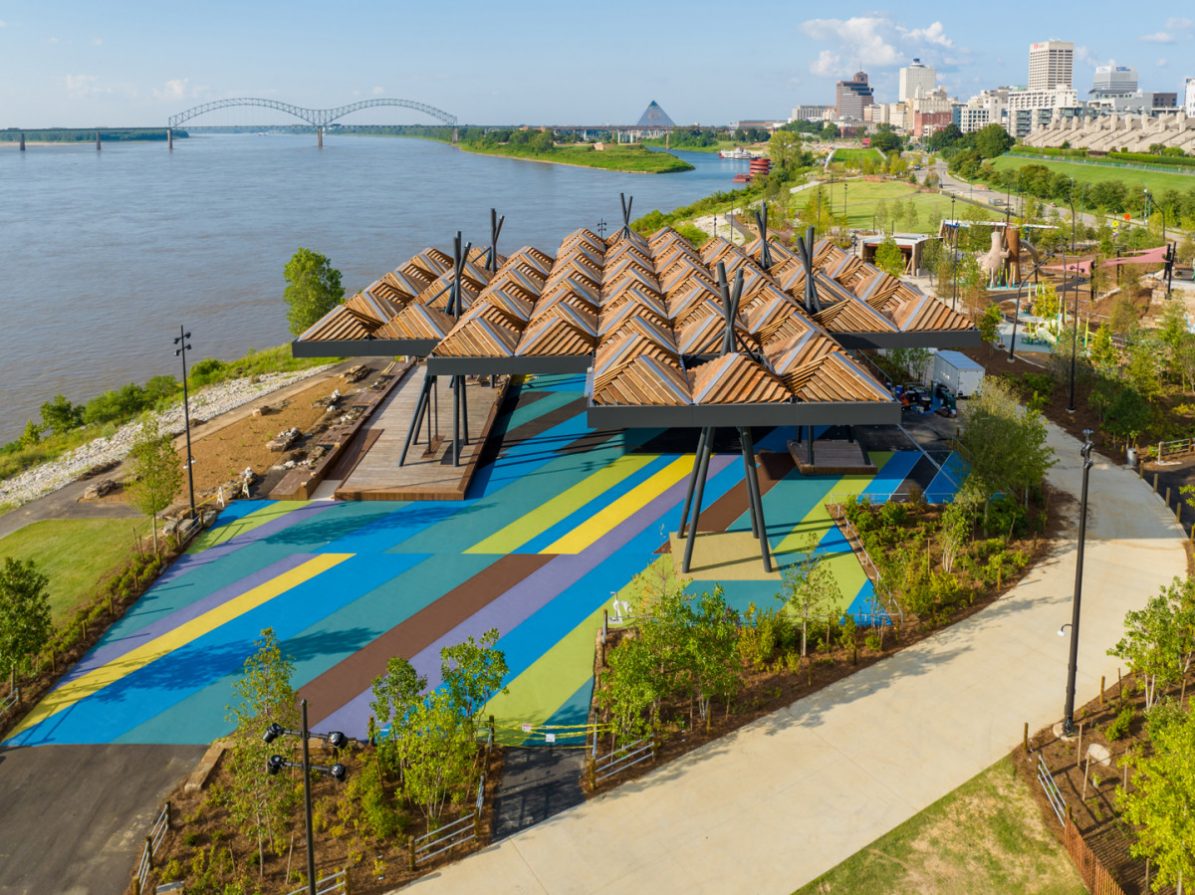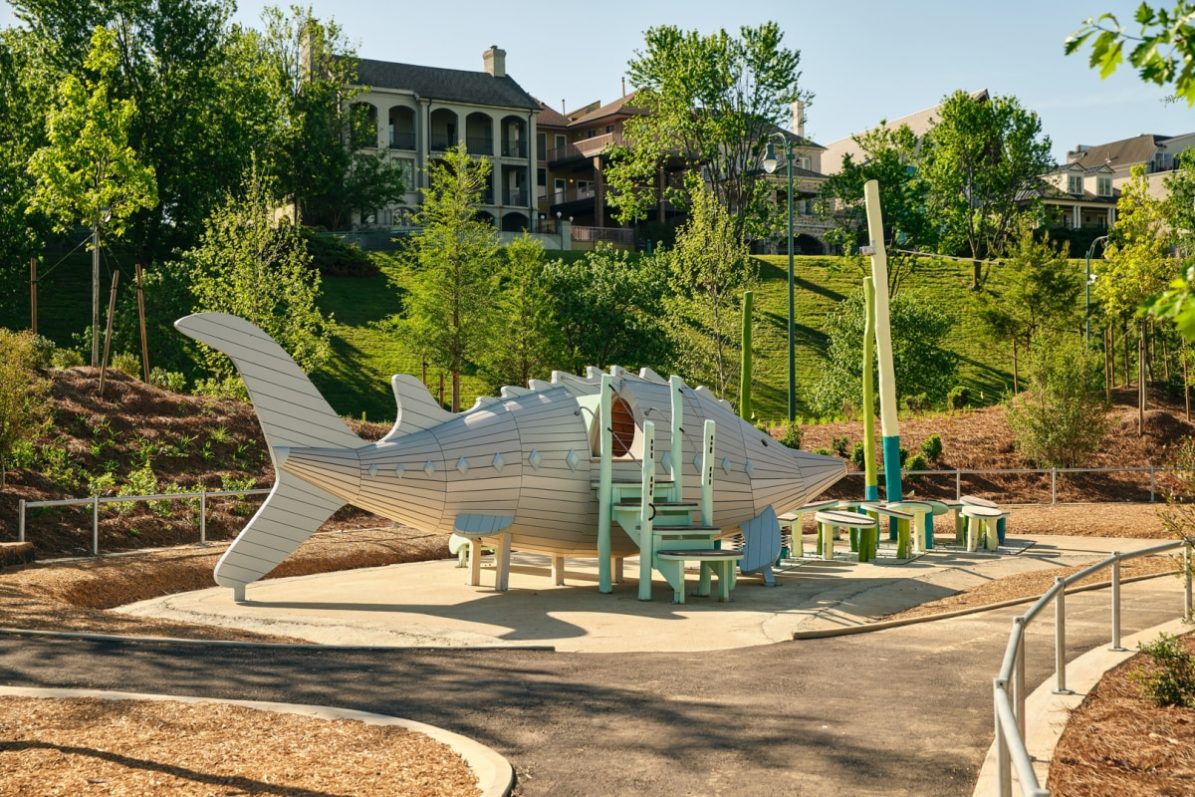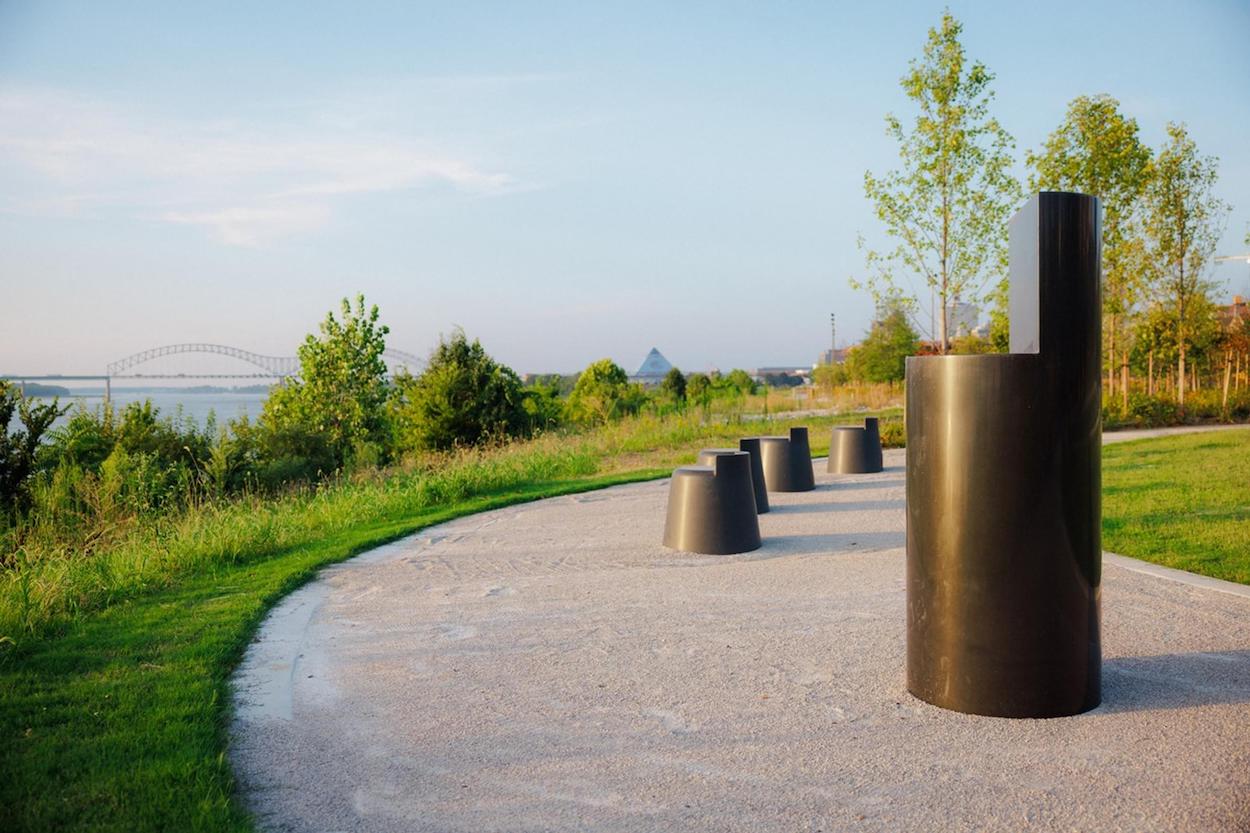Tom Lee became a national celebrity in 1925 when the Black Memphian heroically rescued 32 people from the frigid Mississippi River’s turbulent waters after a steamship capsized near his hometown. Lee’s bravery is mostly forgotten today, but the Tennessee city named a riverfront park after him and erected two monuments there in his honor. Though Tom Lee Park’s vast open spaces served as grounds for springtime music and barbecue festivals, it had fallen into disrepair a century later. A four-lane road limited access, a clay cap practically compacted the soil into concrete and prevented flora from thriving, and it was used as a dumping ground. Its rugged terrain even drew comparisons to the moon.
Local lawmakers envisioned a brighter future for Tom Lee Park and, in 2017, tapped Studio Gang to develop a master plan for improving six miles of the riverfront. They partnered with landscape design firm Scape to transform the 30-acre field into a community resource. “It’s the most visible piece of real estate we have in the city, and it’s important to tell it right there that Memphis is not a sleepy river town,” Carol Coletta, president and CEO of the Memphis River Parks Partnership, tells Fast Company. “It’s an ambitious place that invests in itself.”
Increasing accessibility to nearby Black and low-income neighborhoods and planting for biodiversity were key—they added 1,000 new trees and an array of native Tennessee species like goldenrod and milkweed while reshaping the topography for flood resistance. The flora helps shade imaginative play sculptures designed by Danish company Monstrum that mimic aquatic creatures. A central plaza houses the Sunset Canopy, a glulam-clad pavilion demarcated by a vivid pavement mural dreamed up by local painter James Little.
At a modest price tag of $61 million, the transformation of Tom Lee Park is an infrastructural feat—and a step forward as Memphis grapples with memories of racism. Parks access was once segregated in the city; the Memphis River Parks Partnership recently rechristened two downtown parks once named after Confederate leaders. Studio Gang even named the Sunset Canopy in honor of Tyre Nichols, the Black man who loved taking pictures during twilight but died this year while in police custody. Near a statue honoring Lee’s memory is A Monument to Listening, an installation by Theaster Gates that arrays 32 basalt chairs—one for each life Lee saved—near the hero’s own throne. They overlook the river that Memphians now enjoy much more. “Use this park as a manifestation of love,” Gates said at the opening.



